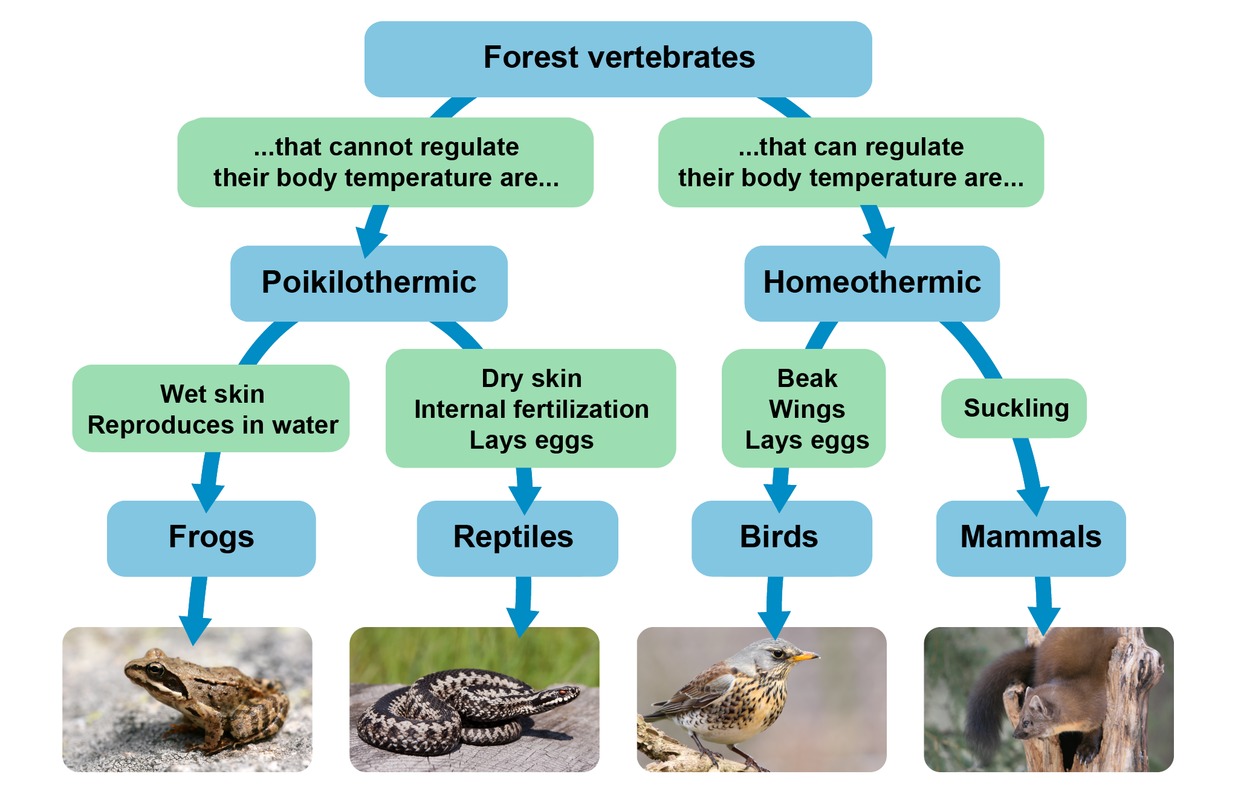Forest vertebrates
 The group of vertebrate animals includes fish, amphibians, reptiles, birds and mammals. All vertebrates have a backbone, which is a kind of an internal supporting structure. Many vertebrate animals are large, but some, such as the shrew, can weigh only a couple of grams.
The group of vertebrate animals includes fish, amphibians, reptiles, birds and mammals. All vertebrates have a backbone, which is a kind of an internal supporting structure. Many vertebrate animals are large, but some, such as the shrew, can weigh only a couple of grams.
Birds and mammals are heterothermic or warm-blooded animals. This means that their body temperature remains the same, despite changes in their environment. In contrast, reptiles and amphibians are poikilothermic or cold-blooded animals. Their body temperature is dependent on the temperature of the environment.
Many mammal and bird species have territories. A territory is an area, which is inhabited and defended by an individual animal or a group of animals from the same species. Mammals and birds use their territories to search for food and to reproduce. Other individuals or groups of the same species are kept away from the territory.
Image on the right: the brambling makes its territory known by singing.
Because of territories, only a limited number of animals of the same species can inhabit a certain area. This is why there are only few mammal and bird individuals in forests.
Territories are beneficial for large mammal and bird species, as they make sure that the individuals can have access to enough food. Large mammals and birds require a lot of food to maintain their body temperatures, to grow and to reproduce.
